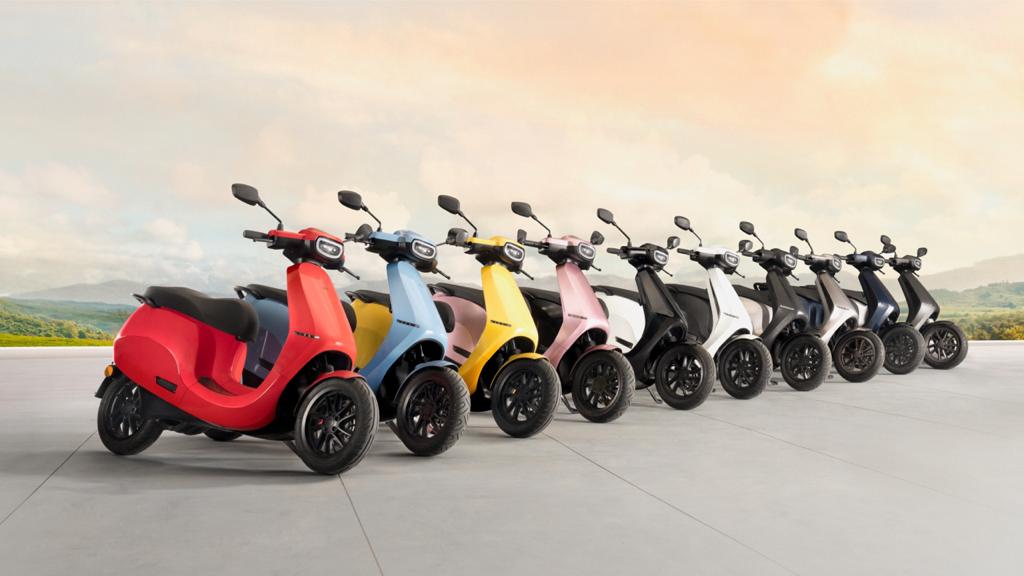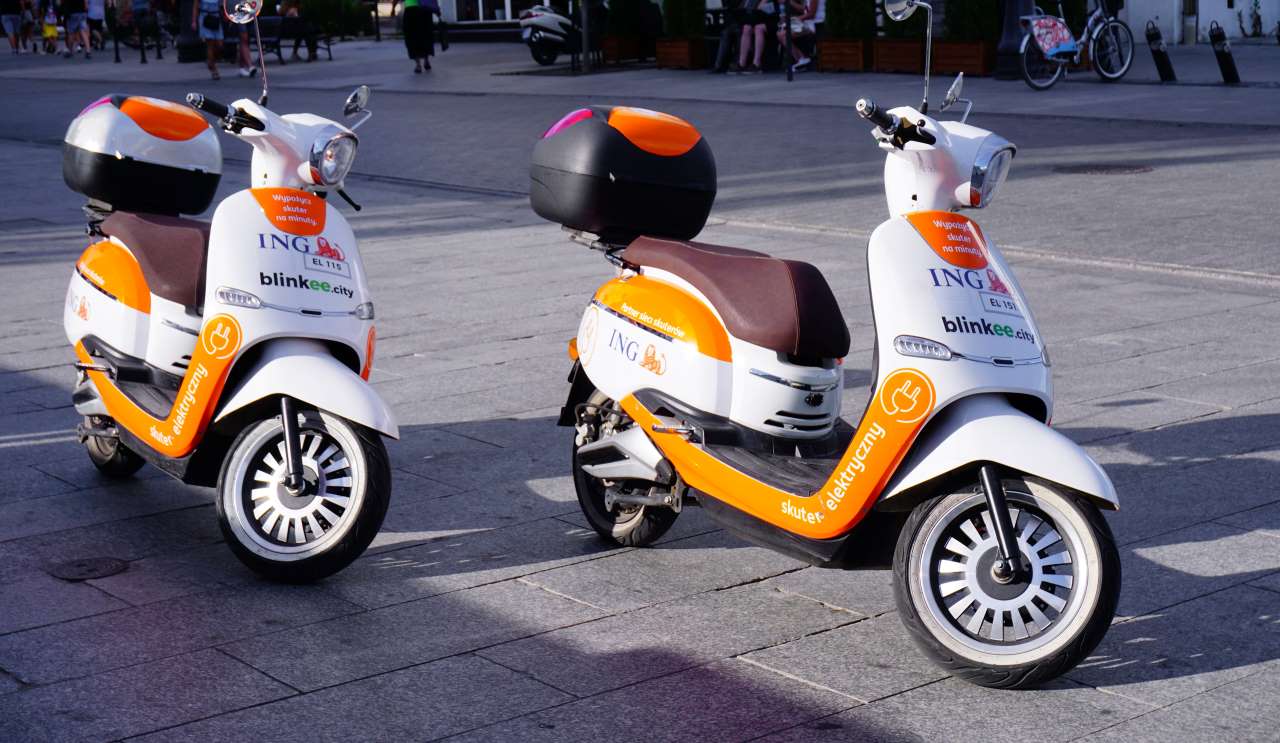Analysis: Ola Electric’s targets are lofty, but can it deliver?

KV Prasad Jun 13, 2022, 06:35 AM IST (Published)
 Listen to the Article (6 Minutes)
Listen to the Article (6 Minutes)
Summary
Ola is aiming to build a two-wheeler factory almost five times larger than any other present. But are the production numbers feasible, and can it really sell large numbers without a service infrastructure?
In February, near the Ashok Leyland manufacturing facility in Tamil Nadu, the ground was being laid for a cutting-edge Future Factory. A factory that claims it is building capacity to produce 10 million electric scooters in a year – almost five times larger than any other existing two-wheeler factory in the country, and half of the entire two-wheeler market in India.
The Future Factory belongs to ride-hailing company Ola, which is now betting serious money on personal mobility through its electric two-wheeler arm Ola Electric.
This strategy is at odds with the original mission statement of Ola, which was to promote ride-sharing over personal ownership of vehicles.
But, Ola explains this two-pronged approach to the mobility business like this. “We’ve been at it for the last three-four years. We believe shared mobility with ride-hailing will continue to grow, but a vast majority of people will choose to use personal mobility. We’re addressing both through Ola Cabs & Ola Electric”, Varun Dubey, Ola Electric’s head of marketing says.
Also read: Ola electric scooter to launch on August 15; details here
This all-encompassing vision is the brainchild of Bhavish Aggarwal – who’s been at the helm of affairs at Ola Cabs for over a decade. He has, however, had difficulty passing down this vision to key people at the helm of Ola Electric – who exited the company one after the other over the last couple of years, often just months after joining, in ostensible frustration with keeping up with the pace of change at the company which was simply inconsistent with the memos, these top-level execs were handed out.
“People said we will not be able to build our factory so fast, but here it is. People said we will not be able to get the product ready so soon, but it is out in the market in a few weeks,” Dubey adds.
And Dubey is right. The Future Factory in its 500-acre campus is indeed real – but it is quite some way from being viable. The Ashok Leyland manufacturing unit it is situated in close proximity to, took a lot longer than six months from the time it broke ground to roll out a vehicle from its production lines. Ola Electric – having opened bookings for its electric scooter to an initial booking volume of 1 lakh units – says it is planning to ready a production capacity of 2 million units “anytime now”.
Also read: Open to amicable resolution of disputes with Hero MotoCorp, says Hero Electric promoter Naveen Munjal
Ola claims that despite a lack of prior exposure to automotive manufacturing, it can beat the lead times of established automakers easily to ready a factory of a scale larger than even Hero MotoCorp – which has a capacity of 2.7 million units at present at its largest factory — all in a matter of six months. Since it is a feat Ola is attempting with a lot of pomp and show, it runs a high reputational risk if it does not get the product right and deliver on time. Sources suggest Ola Electric is also looking at exporting 20-40 percent of its volumes to high-volume export markets in ASEAN countries including Vietnam, Cambodia, and the Philippines, as well as relatively lower-volume European countries.
That’s another reason the product’s success in India is key to establishing the company’s global business.
Quick production and delivery also seem to be Ola Electric’s intent, but one can take cues from how other manufacturers have handled deliveries of high-interest products in the past. Mahindra & Mahindra’s Classic Legends, which operates the Jawa brand of motorcycles, received a flurry of bookings in 2018, but many of its customers continue to wait for their bikes after the manufacturer supplied a cumulative number of 50,000 bikes and then significantly slowed down deliveries due to supply chain constraints. With Ola’s capacity and claims of “production readiness”, that is not an explanation anymore.
However, industry estimates based on the viability of production lines and examination of Ola’s vendor base suggest that Ola Electric’s first production run could only utilise close to 15-25 percent of its installed capacity of 2 million, or that it will be able to set up a viable production line of 3 lakh – 5 lakh units annually. In case these numbers start to sound unimpressive when contrasted with the vivid imagery of a future factory producing millions of scooters, sample this: Existing players in the segment planning capacity expansion are looking at putting up facilities that can make a hundred thousand units (Ather Energy and Revolt Motors) three hundred thousand units (Hero Electric), and five hundred thousand units (Okinawa).
Also read: Bajaj Auto Q1 net profit doubles; forms subsidiary to make electric, hybrid vehicles
While Hero Electric claims it has raised Rs 700 crore to expand capacity to a cumulative production of 1 million units out of 2 or 3 factories – it aims to be able to do so only by 2025. And even with that it will be only a tenth of the 10 million capacity that Ola Electric claims it will achieve by the end of fiscal year 2022.
Who’s buying 2 million electric scooters?
Once again, when Ola claims it will be “ready to honour the demand it receives”, it sure does not anticipate demand of 2 million units. For context, total industry volumes for electric two-wheelers last year were 1,57,000 units. In the high-speed category in which Ola will operate, only 30,000 units were sold in the first half of this year.
Industry watchers say they will be impressed if Ola manages to do even these numbers – 30,000 actual sales in the second half of the year, though it may form but a small fraction of its production wherewithal.
Ather Energy’s recently released Impact report suggests that the electric scooter upstart only managed to sell 3000 scooters from the time it first launched up until 2020. A key difference here is Ather launched its scooter in a staggered manner and these are sales it received from only the two cities it had launched in – Ola Electric has said it will do pan-India door-step deliveries from the get-go.
With the capacity it claims to be building, Ola Electric will not like to keep people waiting for its products. But what sums up the overwhelming demand Ola claims it has received so far is that the bookings – the only indicator of demand so far – are against a fully refundable amount of Rs 499.
Also read: Check out which state offers the most subsidies for electric vehicle makers, buyers
Assuming Ola Electric unveils the product this month and begins delivering the vehicles in time for the festive season, it will need physical infrastructure to put the products on the roads. While the company has so far not shared any details of experience centres it may look to put up, it has said the sales process will largely take place online, since Ola is a tech company.
No dealers have been approached to put up any sales or service touchpoints so far. “Sales points can be avoided, if the vehicle is good, in-demand & and the waiting period is in months, but this will change eventually,” Vinkesh Gulati, president of the Federation of Automotive Dealers’ Association of India said.
“Service points, however, are a must. Maybe few, but they have to be present in each town if they sell even a single vehicle,” he added.
This worry checks out even in the context of the company’s Hypercharger network. Ola says it will install 100,000 fast-charging touchpoints across India.
“The team is working on this day in and day out and you’ll see some of these grids very soon”, Dubey says.
If Ola indeed manages to put up that number of charging points – it will be the largest such network in the world, much like the production capacity it claims.
At present, however, potentially weeks before the scooter is on the road, we’re yet to see even one hyper charging point in any of the 400 cities that Aggarwal has spoken of. The journey to a hundred thousand charging points will have to have humble beginnings — one might make two – and then finally, a two-wheeler.

Elon Musk forms several ‘X Holdings’ companies to fund potential Twitter buyout
3 Mins Read
Thursday’s filing dispelled some doubts, though Musk still has work to do. He and his advisers will spend the coming days vetting potential investors for the equity portion of his offer, according to people familiar with the matter

KV Prasad Journo follow politics, process in Parliament and US Congress. Former Congressional APSA-Fulbright Fellow










 Listen to the Article
Listen to the Article  Daily Newsletter
Daily Newsletter










